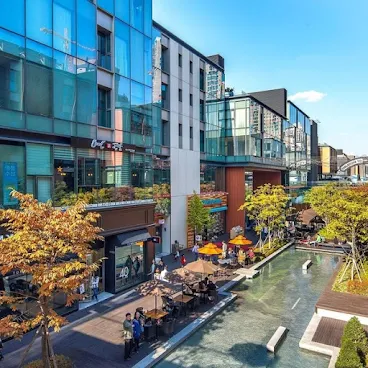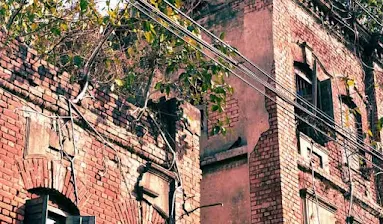Introduction
In the past couple of decades, India has
experienced a significant uptick in the trend of people migrating from rural
areas to urban cities in search of better living, since the full-fledged advent
of globalization. This would mean development of economic inclusively as well
as betterment of living standard. Construction sector is most important part of
the economy.
For betterment of
living standard, sustainable housing and infrastructure development should be
taken in the mind. Before taking step toward the construction sector, everyone
should know about the different types of building.
- What Is Building?
A building is defined
as structure with roof and walls which are made up of any type of material, and
which can be used for any purpose. The building is a structure which provides
shelter to human being for their comfort living. According to their requirement
they construct in various ways.
Types Of Building
The types of building are based on the
several criteria such as size, function, construction, style, design, etc.
According to use & occupancy, the International Building Code (IBC 2018) and the Uniform Building Code (UBC) classify buildings, because they govern the design and construction of structures, each building represents different levels of risk and adjacent properties.
2. Educational Buildings
3. Institutional Buildings
4. Assembly Buildings
5. Business Buildings
6. Mercantile Buildings
7. Industrial Buildings
8. Storage Buildings
9. Wholesale Establishments
10.
Mixed Land Use Buildings
11.
Hazardous Buildings.
12.
Detached Buildings
13.
Multi-Storey or High Rise Buildings
14.
Slums
15.
Unsafe Buildings
16. Special Buildings
17. Multi-Level Car Parking
A. Classification Of Buildings Based On The Purpose:
2. Educational Buildings
3. Institutional Buildings
4. Assembly Buildings
5. Business Buildings
6. Mercantile Buildings
7. Industrial Buildings
8. Storage Buildings
9. Wholesale Establishments
10. Mixed Land Use Buildings
11.
Hazardous Buildings
1. 1. ResidentialBuildings
ü Residential building means a building which provides more than half of its floor area
for dwelling purposes. In other words, it provides residential
with or without cooking or dining facilities.
ü It
is again classified as follows:
- Individual houses or private dwellings
- Lodging or rooming houses
- Dormitories
- Apartments
- Hotels
2. Educational Building
ü For housing educational institutions such as
schools or colleges, these types of buildings are used.
ü These buildings are affiliated and recognized by an appropriate board, university or any similar affiliation authority.
3. Institutional Buildings
ü For specific purposes, the government,
semi-government organizations or registered trusts construct these types of
buildings.
ü The purposes are such as medical or other treatment or care for the persons suffering from physical or mental illness, disease or debility.
ü For example, auditoriums or complexes use for cultural or
allied activities, religious accommodation facilities such as dharamshalas,
jails, correctional facilities, detention centers, juvenile reformatories, etc.
4. Assembly Buildings
The assembly building is defined as the type of building, which is used for public gathering.
The public are gathered for purposes such as recreation, social, religious, patriotic, civil, travel or other similar purposes.
Assembly buildings categorized as movie houses, drama theaters, drive-in theaters, assembly halls, clubhouses, town halls, mangal karyalayas, auditoriums, exhibition halls, museums, gymnasiums, , restaurants, boarding houses, sports complexes, dance clubs, gymkhanas, places of worship, airports, bus stops, taxi stands, railway stations, piers, etc.
5. Business Buildings
Business Buildings used for keeping records of business transactions, maintaining accounts, bookkeeping purposes or managing other types of records.
Business buildings categorized as the city hall, town hall, courtyard and library which are used for the purpose of the accounts, records and similar purposes, professional establishments, service facilities etc.
6. Mercantile Buildings
These type of buildings used for housing shops, stores or showrooms where display and sale of wholesale goods, retail goods merchandise is carried out.
These buildings provide facilities of accommodate office, storage and service facilities essential for the business which should be located in the same building.
7. Industrial Buildings
ü These building used to manufacture, assemble or process products or materials are termed as industrial buildings.
ü They include assembly plants, laboratories, dry cleaning plants, power plants, pumping station, smokehouse, laundry, gas plant, refinery: dairies and sawmills
8. Storage Buildings
ü These building used to storage goods incidental to servicing, processing or repair, excluding goods include highly combustible, explosive products or materials, vehicles or animals.
ü They contain sheltering facilities. These buildings include cold storage, grain storage units, stables, freight depot, transit shed, warehouses, truck terminals, hangars, barns, public garages, etc.
9. Wholesale Establishments
ü These building used for wholesale trade and manufacture, in these buildings, establishments being fully or partially utilized.
ü For providing truck transportation services and/or truck transportation booking services, wholesale shops should have to require storage facilities or warehouses and establishments.
10. Mixed Land Use Buildings
These building are used not only for residential purposes but also for carrying out non-residential activities.
11. Hazardous Buildings
ü These building are used for storing, handling, manufacture, or processing of highly combustible or explosive materials or products, which can produce extreme toughness and toxic fumes or explosions.
ü These materials can be forming an explosive mixture of dust, splitting of matter results in spontaneous ignition of particulate matter.
b. Classification Of Buildings Based On The Design And Height:
12. Detached Buildings
These buildings contain roof and walls and they are detached or separated from any other building, also they have open space at their boundaries.
13. Multi-Storey or High Rise Buildings
The buildings which consist of more than 4 stories and elevations greater than 15 meters (without stilts) or 17.5 meters (with stilts) above the average level of the front road re called as multi storey or high rise building.
C. Classification Of Buildings Based On Standard Of Safety:
14. Slums
The slums have a low level of maintenance and poor living conditions due to insufficient sanitation, ventilation and other harmful factors.
15. Unsafe Buildings
These buildings are structurally weak and thus unsafe, unsanitary or contaminated, uneven or polluted and threat to human life and might pose a threat to safety, health or danger. For public welfare these buildings are unsafe.
D. Classification Of Buildings Based On Other Features:
16. Special Buildings
It consist of assembly buildings, industrial buildings, bulk installations, hazardous buildings, hotels, hostels and centrally chilled buildings that are more than 15 meters in height and have a built-up area of over 600 square meters.
17. Multi-Level Car Parking
They are mainly used for parking cars, bikes, scooters and other light motorized vehicles, these structure includes, below ground level with two or more basements or above ground level with two or more floors.

















No comments:
Post a Comment